THE STAGES OF HIS LIFE
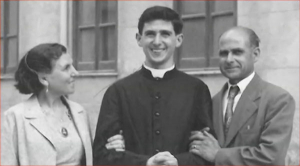
Don Giuseppe Puglisi was born in the Palermo neighborhood of Brancaccio, courtyard Faraone number 8, on September 15, 1937, son of Carmelo, a shoemaker, Carmel, and Giuseppa Fana a dressmaker. Don Puglisi was killed by the mafia in the same town on September 15, 1993, on His 56th birthday.
He entered the diocesan seminary in Palermo in 1953 and was ordained a priest by Cardinal Ernesto Ruffini on July 2, 1960 in the church-sanctuary of Our Lady of the Remedies. In 1961 he was appointed co-operative vicar in the parish of SS. Salvatore in the hamlet of Settecannoli, near Brancaccio, and from 27 November 1964 he worked also in the nearby church of San Giovanni dei Lebbrosi in the neighborhood of the Romagnolo.
From 1962 he served as confessor to the Basilian Sisters of Santa Macrina’s daughters in the homonymous institute.
He began to teach in Einaudi school (1962-63 and 64-66) at the secondary school Archimedes (63-64 and 66-72), Villafrati (70-75) and in the split section of Godrano (75-77 ). Eventually he taught at the high school Santa Macrina (76-79) and finally at the high school Vittorio Emanuele II (78-93).
In 1967 he was appointed chaplain at the orphaned institute “Roosevelt” at the Addaura and vicar at the parish Maria Santissima Assunta in Valdesi.
In 1969 he was appointed vice rector of the diocesan minor seminary. In September of the same year he took part in a mission in the Montevago, that had been hit by the earthquake.
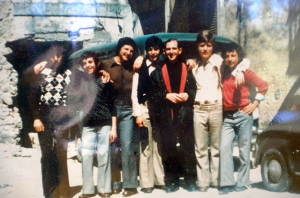
From the beginning of his ministry, Don Puglisi was particularly interested in young people and was concerned with the social issues of the most marginalized neighborhoods in the city.
He followed the work of the Second Vatican Council carefully and immediately disseminated its documents among the faithful, with special regard to the renewal of the liturgy, the role of laity, the values of ecumenism and the local churches. His desire was always to incarnate the announcement of Jesus Christ in the territory, thus assuming all the problems to make them of the Christian community.
On October 1, 1970, he was appointed parish priest of Godrano, a small village in the province of Palermo – marked by a bloody feud – where he remained until July 31, 1978, and succeeded in reconciling the families torn by violence with the power of forgiveness.
In this period, he joined forces with Lia Cerrito and other volunteers of the Crusade of the Gospel (since 1987 known as Presence of the Gospel), founded by the Friar Minor Sicilian Placido Rivilli.
During these years, he followed the social battles of the “Scaricatore” neighborhood. another degraded area in the eastern suburbs of the city,”, in collaboration with the social center of the Decollati administered by the Assistenti sociali missionarie, including Agostina Ajello.
On 9 August 1978 he was appointed rector of the seminary in Palermo and on November 24 of the following year he was elected by the archbishop Salvatore Pappalardo as vocations director of the diocesan center of vocations. On 24 October 1980 he was appointed deputy regional delegate of the vocation center and from 5 February 1986 he was director of the Regional Center for vocations and member of the National Council.
He had passionately devoted long years to students and young people of the diocesan vocations Center realizing, through a series of “school field trips”, an exemplary Christian pedagogical training course.
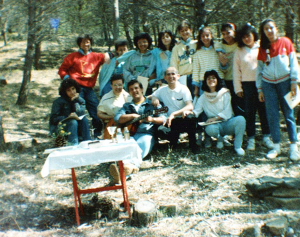
In Palermo and Sicily he was among the promotors of numerous movements including: Presence of the Gospel, Catholic Action, Fuci, Equipes Notre Dame, Walking together. From May 1990, he held his priestly ministry at the “House Madonna dell’Accoglienza” in Boccadifalco, Of the Opera Cardinal Ruffini, to help young women and single mothers in difficulty.
On 29 September 1990 he was appointed parish priest in San Gaetano, Brancaccio, and in October 1992 he also assumed the position of spiritual director of the preparatory course at the Archbishop’s Seminary in Palermo. On January 29, 1993, Brancaccio inaugurated the center “Our Father”, which became the reference point for the youth and families of the neighborhood.
In this period, we was assisted by a group of sisters, including Sister Carolina Iavazzo, and Gregory Porcaro, vice-parish priest. He collaborated with lay people in the area of the Intercondominiale Association to reclaim the civil rights of the township, denouncing collusion and malfeasance and all the while undergoing threats and intimidation.
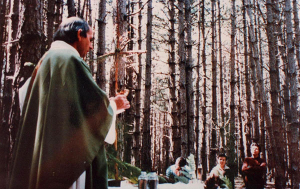
He was killed in front of his home in Piazza Anita Garibaldi 5 on his birthday, September 15, 1993.
He was buried at the cemetery of Sant’Orsola, in the chapel of Sant’Euno, owned by the lay homonymous confraternity. In April 2013 the body was moved to the cathedral of Palermo.
His pastoral activity –were reconstructed by judicial inquiries as constituting the motive forhis murder The killers and the Mafia bosses who ordered the murder were arrested and condemned with definitive sentences.
For this reason, right after the crime numerous voices rose to ask for the recognition of martyrdom.
In memory of his commitment, there are countless schools, social centers, sports facilities, streets and squares after him in Palermo, and throughout Sicily..
Commemorations and initiatives were also held abroad, from the United States to the Congo, and Australia.
September 15, 1994, the anniversary of his death, marked the opening of the pastoral year of the diocese in Palermo.
In December of 1999, five years after the crime, Cardinal Salvatore de Giorgi summoned the diocesan ecclesiastical tribunal for the recognition of his martyrdom. The investigation was concluded at the diocesan level in May 2001 and the dossier was sent to the Congregation for the cause of Sainthhood in the Vatican. In August of 2010, cardinal Paolo Romeo named a new postulator, Msgr. Vincenzo Bertolone.
In June 2012, the Congregation gave its final consent to the promulgation of the decree for the recognition of the martyrdom of Don Puglisi. On May 25, 2013 the beatification took place at the “Foro Italico Umberto I st” of Palermo.
A “Puglisi Archive” of edited and unpublished writings, records, testimonies and articles was made at the diocesan vocation center in Via Matteo Bonello in Palermo (archiviogiuseppepuglisi@diocesipa.it).
His life and death were evidence of his loyalty to the one Lord and revealed the evil and the absolute incompatibility of the Mafia with the Gospel message.
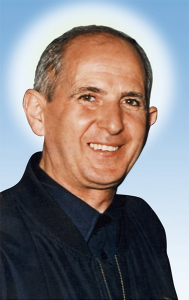 The believer who has seriously pondered his Christian vocation, including what Revelation has to say about the possibility of martyrdom, cannot exclude it from his own life’s horizon. The two thousand years since the birth of Christ are marked by the ever-present witness of the martyrs.
The believer who has seriously pondered his Christian vocation, including what Revelation has to say about the possibility of martyrdom, cannot exclude it from his own life’s horizon. The two thousand years since the birth of Christ are marked by the ever-present witness of the martyrs.
(John Paul II, Incarnationis Mysterium, n.13)



Leave a Reply
Want to join the discussion?Feel free to contribute!